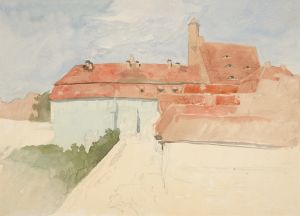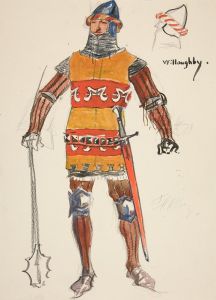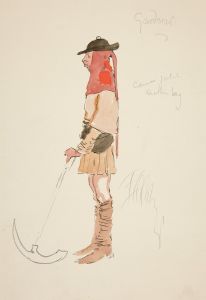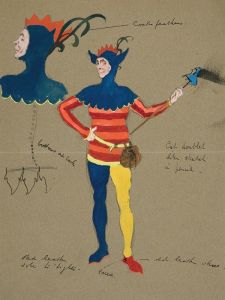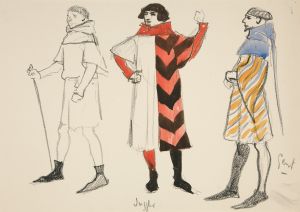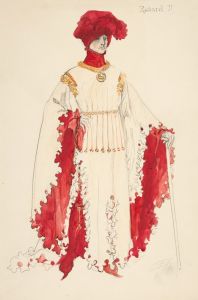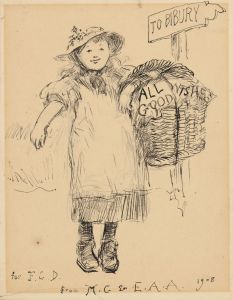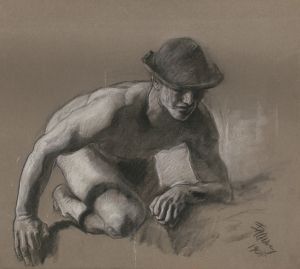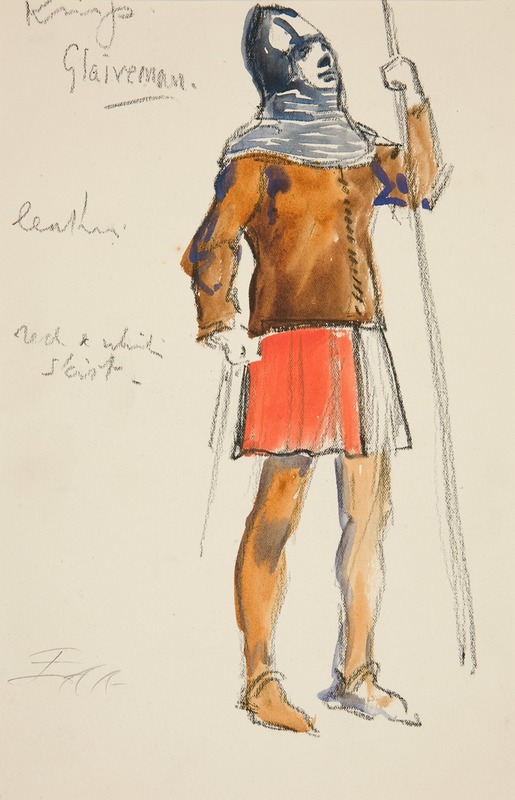
Glaiveman, costume sketch for Henry Irving’s Planned Production of King Richard II
A hand-painted replica of Edwin Austin Abbey’s masterpiece Glaiveman, costume sketch for Henry Irving’s Planned Production of King Richard II, meticulously crafted by professional artists to capture the true essence of the original. Each piece is created with museum-quality canvas and rare mineral pigments, carefully painted by experienced artists with delicate brushstrokes and rich, layered colors to perfectly recreate the texture of the original artwork. Unlike machine-printed reproductions, this hand-painted version brings the painting to life, infused with the artist’s emotions and skill in every stroke. Whether for personal collection or home decoration, it instantly elevates the artistic atmosphere of any space.
Edwin Austin Abbey was an American artist known for his work in both illustration and painting, particularly with themes related to Shakespearean and historical subjects. One of his notable works is the costume sketch titled "Glaiveman, costume sketch for Henry Irving’s Planned Production of King Richard II." This piece was created as part of Abbey's involvement in the theatrical world, specifically in collaboration with the renowned English actor-manager Henry Irving.
Henry Irving was a significant figure in the Victorian theatre scene, known for his innovative approaches to stage production and his dedication to bringing Shakespeare's works to life with authenticity and grandeur. Irving's planned production of "King Richard II" was part of his broader efforts to stage Shakespearean plays with meticulous attention to historical detail and dramatic impact.
The costume sketch by Abbey reflects the artist's skill in capturing the essence of the character and the period. Abbey was known for his ability to infuse historical accuracy with artistic flair, making his costume designs both practical for stage use and visually compelling. The term "Glaiveman" likely refers to a character or role within the play that would have been equipped with a glaive, a type of polearm, suggesting a martial or guard-like position within the narrative of "King Richard II."
Abbey's involvement in this project highlights the intersection of visual art and theatre during this period. His sketches would have been used to guide the creation of costumes that not only fit the historical context of the play but also supported the dramatic needs of the production. Abbey's work in this area is a testament to the collaborative nature of theatre, where artists, actors, and directors come together to create a cohesive and immersive experience for the audience.
While the specific details of the "Glaiveman" sketch, such as the exact date of creation or its current location, are not widely documented, Abbey's contributions to theatre design are well-recognized. His work with Henry Irving represents a significant chapter in the history of theatrical production, where the visual elements of a play were given as much importance as the performance itself.
Abbey's sketches, including the one for the "Glaiveman," are part of a broader collection of his works that demonstrate his versatility and dedication to his craft. His ability to blend historical research with artistic creativity made him a sought-after artist for theatrical productions during his time. Abbey's legacy continues to be appreciated by both art historians and theatre enthusiasts, who recognize his role in shaping the visual language of stage productions in the late 19th and early 20th centuries.





